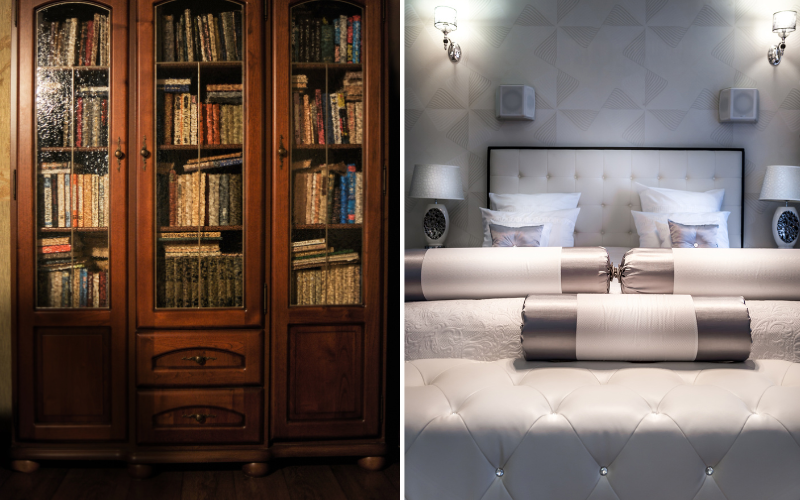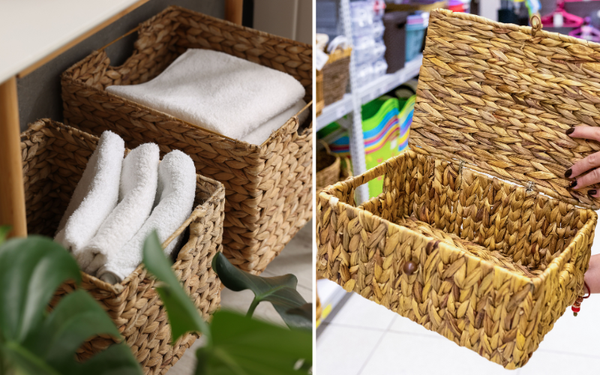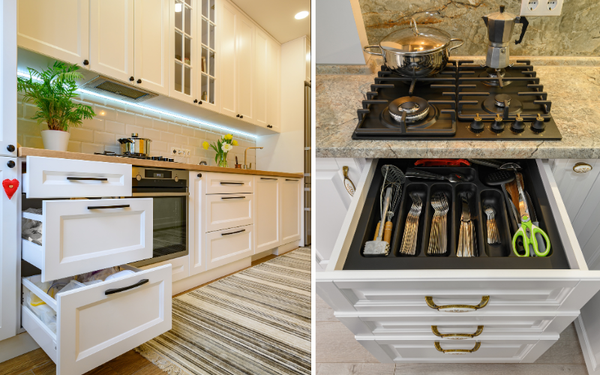Aiming for a sophisticated yet practical bedroom setup? Wondering “how much wider should a headboard be than the bed”? The width of your headboard should exceed the bed by 2 to 4 inches on each side. This article demystifies headboard sizing, guiding you to find the ideal match for your bed, from twin to king size, while considering your room’s layout and your personal style.
Key Takeaways
- The recommended width for a headboard is typically 2 to 4 inches wider than the mattress, with specific ideal widths provided for Twin (41 inches), Full (56 inches), Queen (62 inches), and King (Eastern 80 inches, California 74 inches) sized beds.
- The selection of headboard width should account for room size and layout, bed frame compatibility, and personal style, with consideration for aesthetic balance and functional design.
- Common mistakes when choosing headboard widths include selecting oversized headboards that may overwhelm the space or choosing a headboard that is incompatible with the existing bed frame, thereby disrupting room balance or creating installation issues.
Ideal Headboard Width
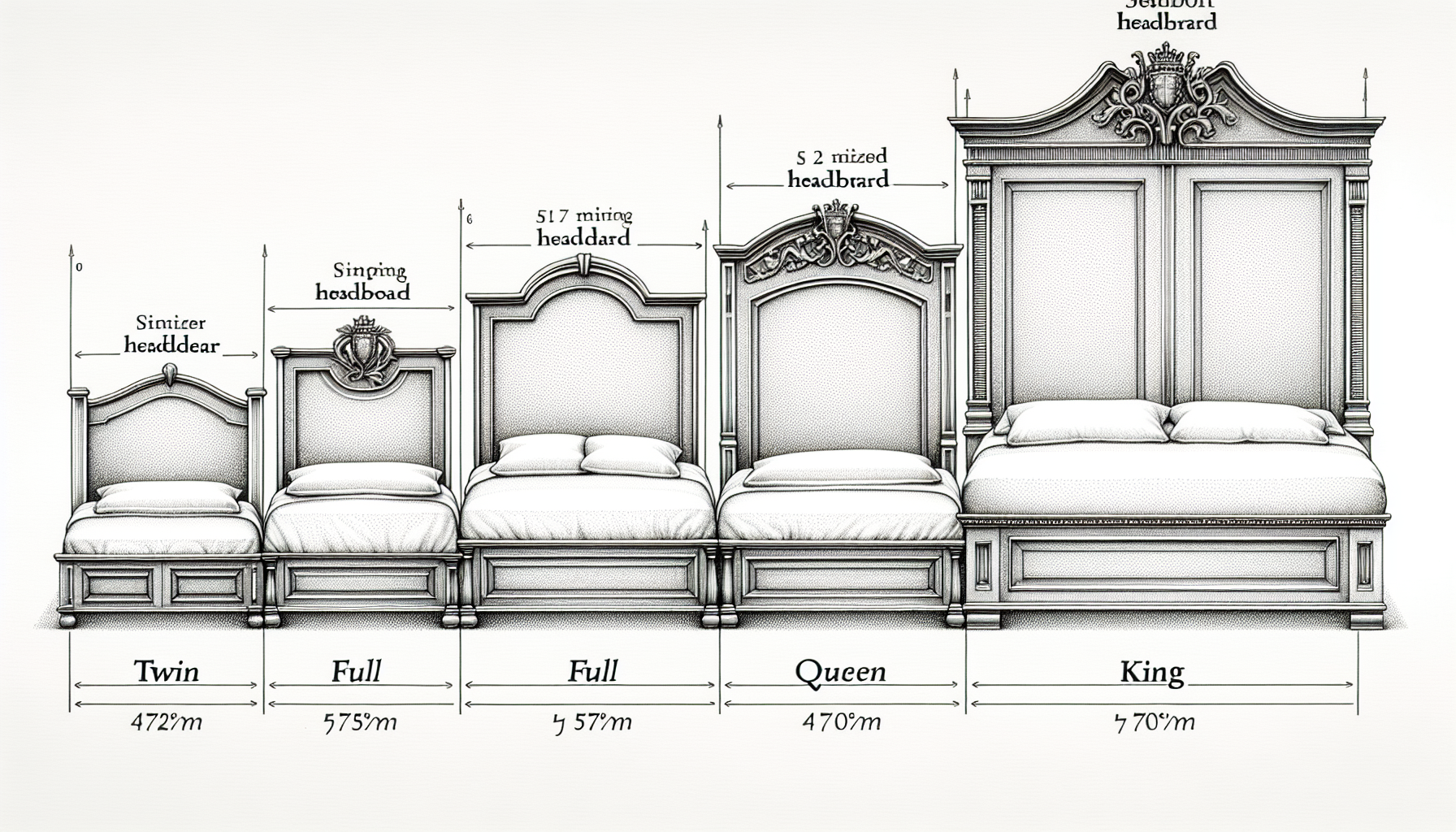
The width of a headboard can make or break the look of your bed. Ideally, the headboard width should extend approximately 2 to 4 inches beyond the mattress width. This ensures a proper fit and aesthetic balance, creating an appealing visual framework for your bed. This rule of thumb applies to all types of headboards, be it upholstered headboards, wooden headboards, or metal headboards,.
However, it’s essential to consider the size of your mattress, the bedding, and the overall room layout when determining the ideal width for a headboard.
Twin Size Bed
A twin size bed typically comes with a headboard that is 41 inches wide. This width is approximately 3 inches wider than the width of a twin size bed, which perfectly aligns with the rule of thumb for headboard widths. These twin size headboard dimensions ensure that the headboard is versatile enough to accommodate both twin and twin XL mattresses, making it an ideal choice for various bed lengths.
Ensuring a proper match between the headboard size and the bed size is essential for maintaining room aesthetics. An ill-fitted headboard can disrupt the balance of your room and make it look cluttered or disproportionate. Therefore, selecting from various twin headboards with a width of 41 inches will not just ensure a proper fit, but also enhance the overall look of your bedroom.
Full Size Bed
The ideal headboard width for a full-size bed is approximately 56 inches. This width provides a balanced and proportional look to the bed frame. This width aligns perfectly with the standard dimensions of a full-size bed, ensuring a balanced and harmonious look.
Choosing a headboard width that fits perfectly with your full-size bed will enhance the aesthetic appeal of your bedroom. A headboard that is too wide or too narrow can make your bed look out of place and disrupt the overall room layout. Therefore, a full-size headboard width of 56 inches is recommended to ensure a proper fit and enhance the overall look of your bedroom.
Queen Size Bed
Queen size headboards typically measure between 60 to 64 inches wide, with a recommended width of 62 inches. This width ensures a perfect fit and balance with the dimensions of a queen size bed, enhancing the aesthetic appeal of your bedroom. Knowing the different headboard sizes, including king size headboard dimensions, can help you make the best choice for your space, especially when considering size headboard dimensions for various bed sizes.
Choosing the correct width for a queen size bed headboard is key for both room aesthetics and functional design. It’s important to take room size and personal style preferences into account when choosing a queen size headboard. A queen size headboard that is too wide for your room can make the space look cluttered and cramped.
On the other hand, a queen headboard that is too narrow can make your bed look disproportionately small.
King Size Bed
The ideal headboard width for a king-size bed should be 2 to 4 inches wider than the bed. However, it’s necessary to distinguish between an Eastern King and a California King. A standard Eastern King size headboard typically measures 80 inches in width, while a California King headboard is approximately 74 inches wide,.
The recommended headboard height for a king-size headboard is 58 inches above the top of the mattress. This height can impact the overall aesthetic and support of your bed. Therefore, when choosing a king-size headboard, it’s crucial to consider both the width and height to ensure a perfect fit and balance.
Factors to Consider When Choosing a Headboard Width
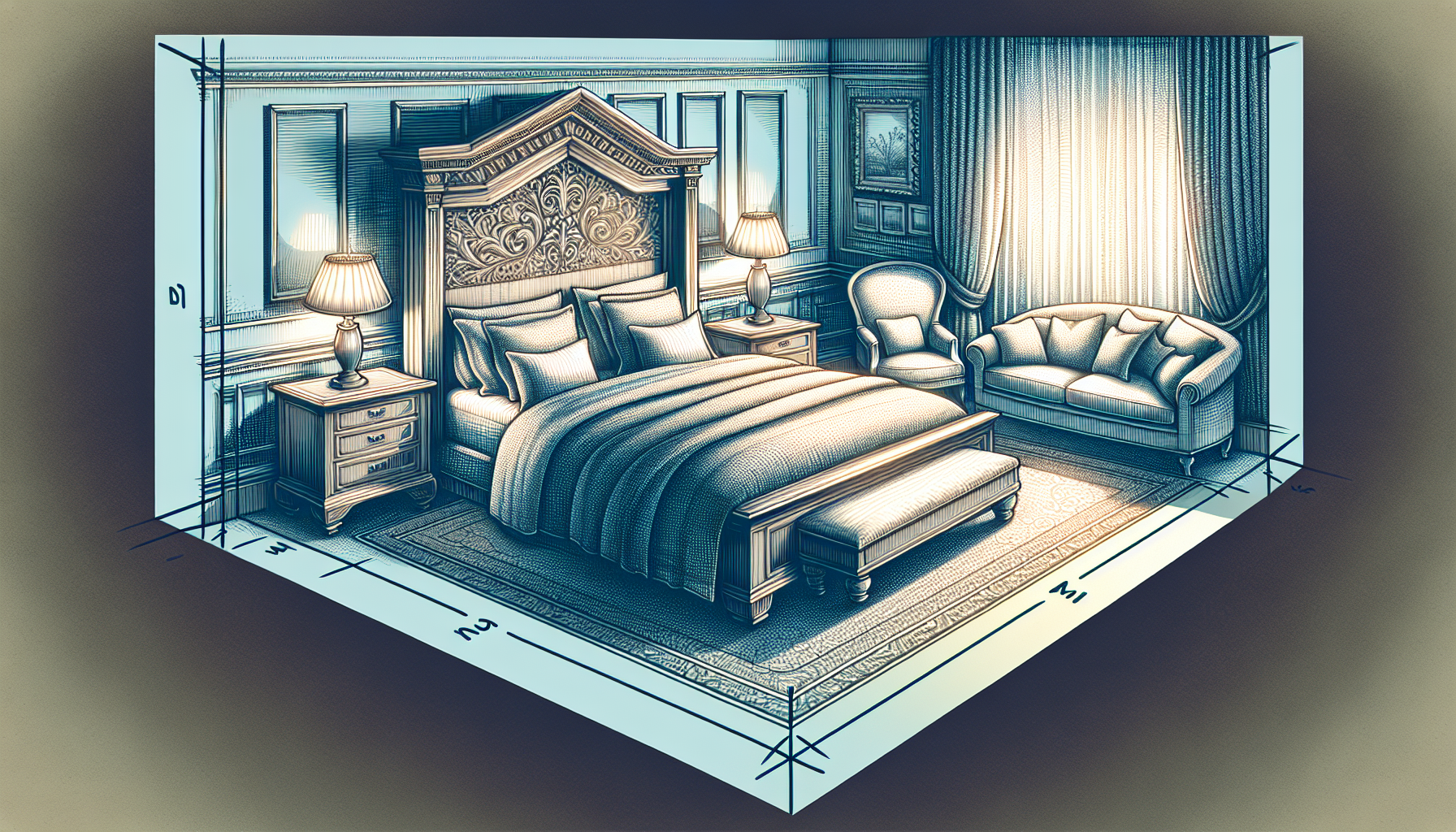
While the rule of thumb for headboard width is pretty straightforward, several factors can influence your final decision. These include the bedroom’s available space and aesthetics, bed frame compatibility, and personal style and preferences. Each of these factors plays a crucial role in determining the ideal headboard width for your bed.
,,,
Room Size and Layout
The size and layout of your room significantly influence your choice of headboard width. An overly wide headboard in a small room can create a cluttered look and disrupt the room’s balance. Therefore, when selecting a headboard width, it’s crucial to consider the proportion to both the bed and the overall room layout. When planning the arrangement of the room, be sure to consider the inclusion of additional furniture such as bedside tables. This will help create a comprehensive and functional layout.
Furthermore, the right style of headboard should be chosen in the context of the entire bedroom setup, not just the existing bed frame. The headboard plays a pivotal role in anchoring the room’s appearance. Therefore, it’s essential to ensure that the headboard width complements the room without overcrowding it,.
Bed Frame Compatibility
The bed frame is another critical factor to consider when choosing a headboard width. It’s crucial to ensure the headboard width is compatible with the bed frame for ease of installation and overall proportion. Headboards can be freestanding, wall-mounted, or attached to the bed frame, each requiring consideration of different compatibility and installation methods.
For adjustable beds, an adjustable headboard that can accommodate movement, such as wall-mounted or freestanding options, is necessary. To avoid difficulties in headboard attachment, it’s important to choose the right adjustable headboards that match the size and come with the correct mounting hardware, ensuring stability and structural integrity for the bed.
Personal Style and Preferences
Your personal style and preferences should significantly influence your choice of headboard width. Custom headboards can be crafted to not only fit the width of the bed but also to complement the overall decor and style of the bedroom. Headboards contribute to the bedroom’s aesthetics by anchoring the room’s appearance and adding both functionality and comfort.
Creating a custom headboard cover is a simple way to alter the look of a headboard, using fabric that matches the bedroom’s decor. DIY headboards can be constructed from materials such as plywood, allowing for a perfect match to the personal style of any bedroom. Upholstered headboards offer a soft, plush back support and come in a range of designs and colors, while wooden headboards offer a warm look and can be easily customized.
Extra-wide headboards, especially when wall-mounted, provide flexibility in installation and can accommodate various bed sizes from queen to California king size bed, including those with a tall headboard or tall headboards.
Customizing Your Headboard Width

Customizing the width of your headboard is a great way to ensure that it fits perfectly with your bed and aligns with your personal style. This can be achieved through DIY projects, wall-mounted options, or selecting a bed frame with a built-in headboard.
DIY Headboards
DIY headboards offer a unique opportunity to customize your headboard width, shape, and materials to suit your specific design preferences. Wooden headboards can enhance both traditional and modern bedroom designs, making wood a versatile material choice for DIY headboards, including wood headboards.
Creating a new fabric cover for a headboard is a quick and cost-effective way to personalize a headboard and customize your bedroom decor. This involves measuring and cutting the selected fabric, stapling it into place, and optionally adding more padding for comfort and aesthetics,.
Wall-Mounted Headboards
Wall-mounted headboards offer more flexibility regarding bed size compatibility compared to frame-mounted headboards. The structure of wall-mounted headboards provides stability and the liberty to select any size or style without the constraints of matching a bed frame,.
Freestanding and wall-mounted headboards are alternative options that do not need to be attached to a bed frame, offering greater customization possibilities. Plus, wall-mounted headboards can be customized for any design preference, accommodating exceptionally tall statement pieces that are compatible with rooms with high ceilings,.
Tips for Maximizing Bedroom Space with Headboard Width
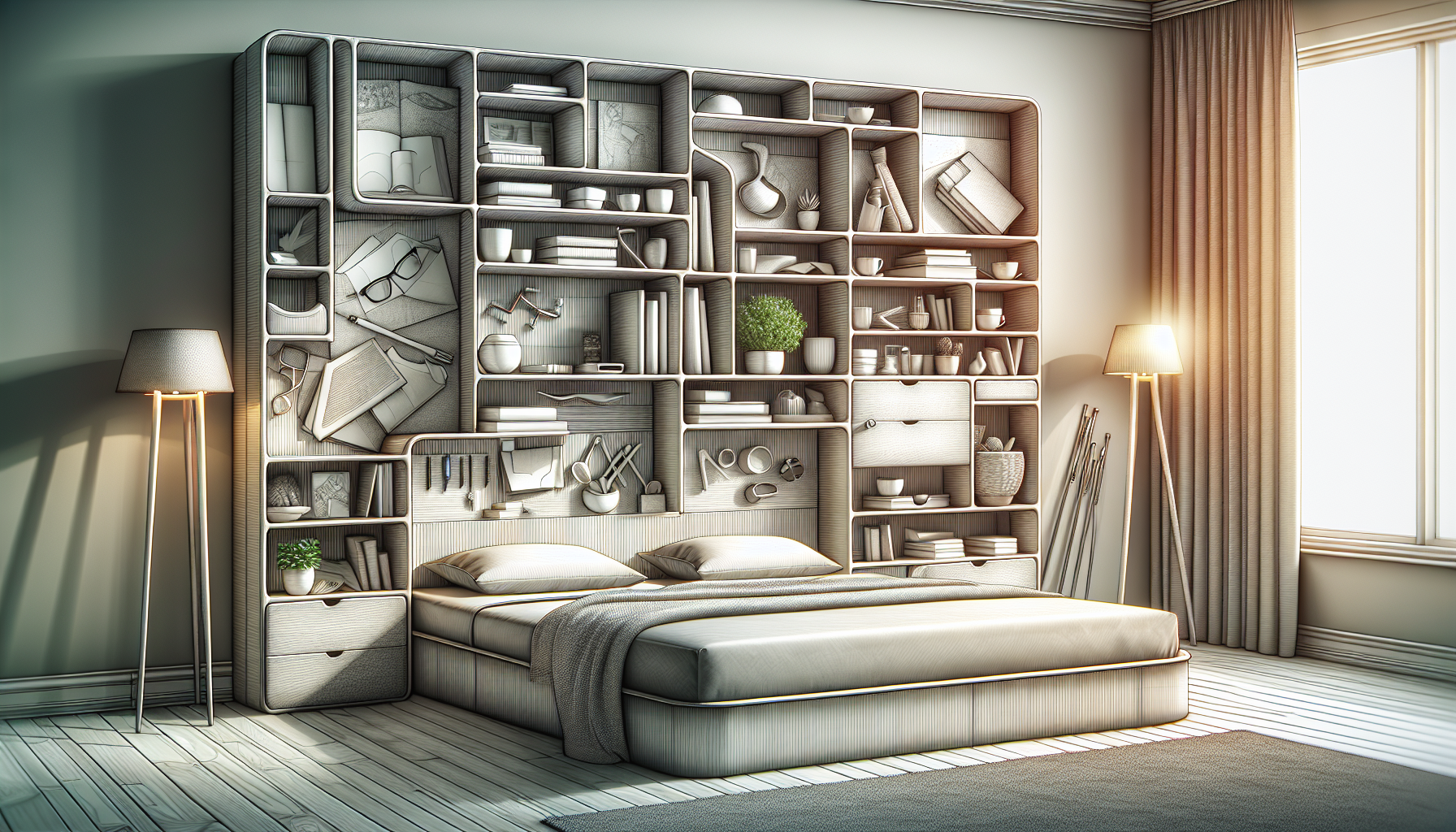
Choosing the right headboard width can significantly help maximize your bedroom space. Here are some options to consider:
- Low-profile headboards can make the bedroom look more spacious.
- Storage headboards provide additional storage space.
- Multifunctional headboards offer both style and functionality.
Opting for Storage Headboards
Storage headboards come with built-in storage units like shelves and drawers, providing a space for essentials like clocks, books, and decorative items. They are commonly used with beds that have a design capable of supporting additional weight and storage, such as platform and bunk beds.
Storage headboards are typically made of wood or metal and are the thickest type available, indicating a robust construction to accommodate storage compartments. Opting for a storage bed with a storage headboard can be a budget-friendly choice, as it combines style, functionality, and easy maintenance, making it ideal for busy lifestyles.
Multifunctional Headboards
Multifunctional headboards, such as upholstered options, provide comfort and versatility. They serve as a padded backrest, making them a versatile choice for various bed types. These headboards offer a blend of style and functionality, enhancing the look of your bedroom while providing additional comfort.
Besides comfort, multifunctional headboards also offer additional benefits depending on their design. Some designs come with built-in storage units, while others feature adjustable heights or widths. This versatility makes multifunctional headboards an excellent choice for those looking to maximize the functionality of their bedroom space.
Common Headboard Width Mistakes to Avoid
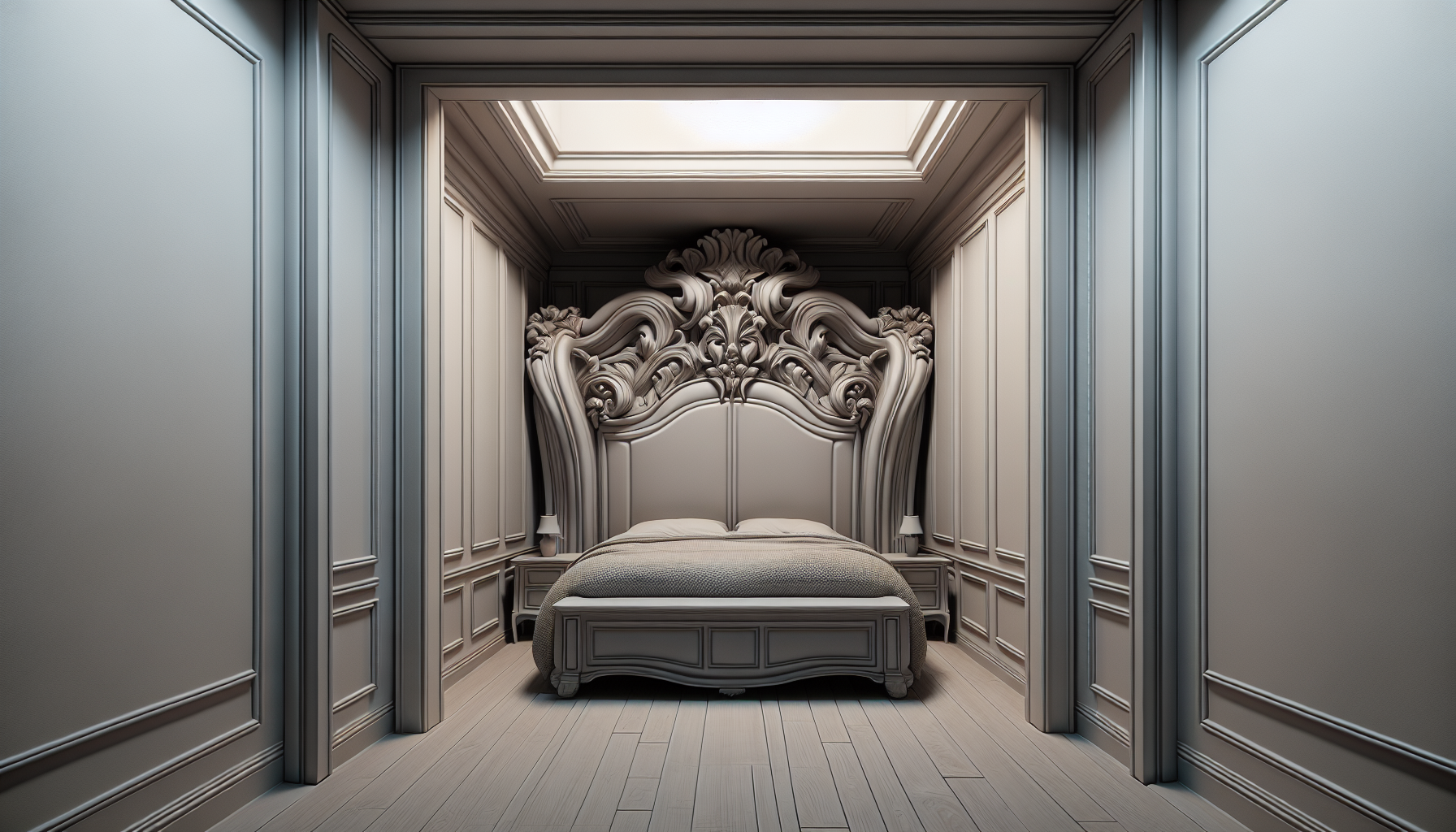
While selecting the right headboard width is crucial for balancing aesthetics and functionality, certain common mistakes can disrupt this balance. These include choosing an oversized headboard that overwhelms the space or selecting a headboard that is incompatible with the bed frame.
Oversized Headboards
Extra-wide headboards that extend beyond bedside tables can overwhelm a space and are more aesthetically pleasing in larger rooms where the sense of space can accommodate the additional width. In a room with limited space, a large headboard can make the space feel even more confined,.
Choosing an oversized headboard can disrupt the balance of your room and make it look cluttered or disproportionate. Therefore, it’s essential to consider the dimensions of your room when selecting a headboard width. The size and layout of your room significantly influence your choice of headboard width.
An overly wide headboard in a small room can create a cluttered look and disrupt the room’s balance.
Incompatible Bed Frames
The bed frame is another critical factor to consider when choosing a headboard width. It’s crucial to ensure the headboard width is compatible with the bed frame for ease of installation and overall proportion. Headboards can be freestanding, wall-mounted, or attached to the bed frame, each requiring consideration of different compatibility and installation methods.
For adjustable beds, flexible headboards that can accommodate movement, such as wall-mounted or freestanding options, are necessary. Incorrect mounting hardware or a size mismatch can lead to difficulties in headboard attachment, with potential instability and structural integrity issues for the bed. Therefore, it’s essential to measure your bed frame properly to ensure a perfect fit.
Summary
To sum up, choosing the right headboard width is crucial for balancing aesthetics and functionality in your bedroom. The ideal headboard width should extend 2-4 inches beyond the mattress width. However, several factors such as room size and layout, bed frame compatibility, and personal style and preferences can influence your final decision. Customizing the width of your headboard through DIY projects or wall-mounted options can ensure that it fits perfectly with your bed and aligns with your personal style. Lastly, avoid common mistakes such as choosing an oversized headboard or a headboard that is incompatible with the bed frame.
Frequently Asked Questions
What is the ideal headboard width for a bed?
The ideal headboard width for a bed should extend approximately 2 to 4 inches beyond the mattress width, providing a balanced and aesthetically pleasing look.
What factors should I consider when choosing a headboard width?
When choosing a headboard width, consider the available space, bed frame compatibility, and personal style and preferences. These factors will help you find the right fit for your bedroom.
You Might Also Like...
